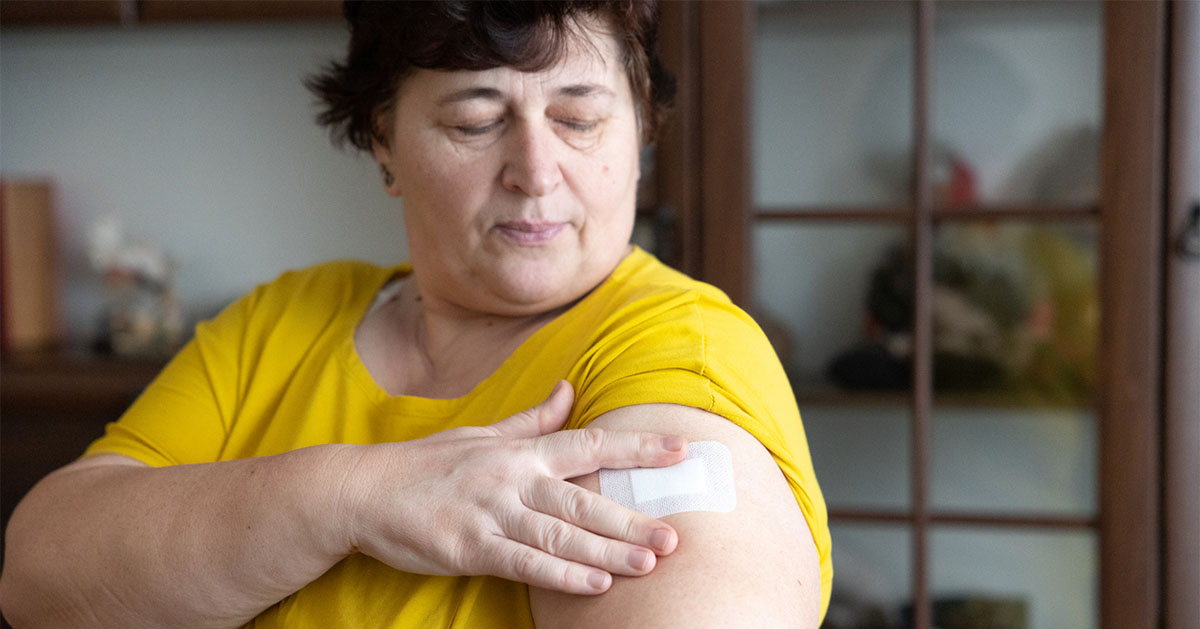All injectable agents rely on correct injection technique for optimal effect. Incorrect technique, including the use of an inappropriate needle length, failure to rotate injection sites and the re-use of needles, can lead to injectable therapies being absorbed in an unpredictable manner. This can cause immediate problems, such as: hypoglycaemia, if insulin is injected into muscle, where it is absorbed more quickly; hyperglycaemia, if it is injected into damaged tissue, where it will be poorly absorbed (Polak et al, 1996; Birkebaek et al, 2008); and perhaps even ketoacidosis in people with type 1 diabetes. In the longer term, we know that poor glycaemic control can increase the risk of complications including kidney failure, blindness and limb amputation (UK Prospective Diabetes Study Group, 1998), all of which can have a devastating impact for the individual, as well as huge cost implications for the NHS (Diabetes UK, 2012).
A common problem associated with poor injection technique is lipohypertrophy (LH) – the accumulation of fatty, rubbery tissue in the subcutaneous layer, which is often caused by repeatedly injecting into the same area. It has been estimated that about half of people with diabetes will experience LH at some time in their life (Frid et al, 2010). Injecting into areas of LH results in variable absorption and erratic glycaemic control. A recent study has confirmed that incorrect site rotation and needle re-use are the two main causative factors (Blanco et al, 2013). The recommended site for insulin and glucagon-like peptide-1 (GLP-1) receptor agonist injections is the subcutaneous tissue (Frid, 2006). Injecting into the subcutaneous layer allows insulin to be absorbed at a more predictable rate, which can result in better glycaemic control (Hofman et al, 2007).
A number of factors contribute to good injection technique, including injection site selection, injection site care, the injection process itself, needle length, use of lifted skin-folds if appropriate and rotation of injection sites. In the case of insulin there are further considerations, including the re-suspension of cloudy insulins and the acknowledgement of different absorption rates at varying sites.
Giving appropriate advice to patients
In 2009, a group of experienced and like-minded diabetes specialist nurses formed the Forum for Injection Technique (FIT) to tackle the problem of poor injection technique. In October 2010, the First UK Injection Technique Recommendations (FIT, 2010) were published and a second edition was published in 2012 (FIT, 2012). The comprehensive document covers topics such as needle length, site selection and absorption rates, rotation of injection sites, lifted skin-folds, insulin storage and re-suspension, lipohypertrophy, sharps safety and safe disposal of injecting material. Eight key points from the FIT Recommendations are presented in Box 1.
The Diabetes in adults quality standard (NICE, 2011) specifies that “injection technique including site selection and care” is part of the recommended structured programme of education for people starting injectable therapies. It also states that all healthcare professionals initiating and managing people on insulin should have completed appropriate training and be able to demonstrate their competency.
The Integrated Career and Competency Framework for Diabetes Nursing (TREND-UK, 2011) states that, in order to safely administer and issue insulin and GLP-1 receptor agonists, a “competent nurse” should be able to demonstrate and teach the correct method of self-administration, including:
- Correct choice of needle type and length for the individual.
- Appropriate use of lifted skin-fold, where necessary.
- Site rotation.
- Storage of insulin.
- Single use of needles.
Nurses should also examine injection sites at least annually for detection of lipohypertrophy.
Conclusion
Raising awareness about the consequences of incorrect injection technique is important to ensure that healthcare professionals make the link between erratic blood glucose control and poor injection technique. People with diabetes need to be taught correct injection technique at initiation of the therapy and it must also be reviewed at subsequent consultations. It is vital that healthcare professionals reassess how people with diabetes are delivering their injectable therapy as part of routine follow-up in the same way that inhaler technique is reviewed when monitoring people with asthma or chronic obstructive pulmonary disease. No matter how efficacious a therapy is, if it is not administered properly it will not have optimal effect. Finally, healthcare professionals have a responsibility to acquire knowledge, skills and competencies relating to current best injection technique practice to effectively support the safe use of injectable therapies in people with diabetes.
Further information
For further information, and to download the latest version of FIT’s injection technique recommendations for the UK (which are reviewed and revised as new evidence emerges), please visit: www.fit4diabetes.com.
Questions to test your knowledge
The answers are not necessarily found in this article.
- The thigh and buttocks are the preferred injection sites when using NPH as the basal insulin.
Is this true or false? - Needles with a length of 4 mm will always give reliable delivery into the subcutaneous layer without using a skin-fold.
Is this true or false? - Which ONE of the following pairs represent the two main risk factors for lipohypertrophy relating to injections?
[a] Incorrect site rotation AND needle re-use
[b] Incorrect site rotation AND needle length
[c] Number of injections per day AND needle re-use
[d] Total daily dose of insulin AND needle length - Long-acting insulin analogues may be given at any of the injection sites as absorption rates do not appear to be site-specific.
Is this true or false? - When using a lifted skin fold, the needle should be immediately withdrawn from the skin after the thumb button plunger is fully depressed.
Is this true or false?
Answers: 1 – true; 2 – false (in some cases a skin-fold may be needed even with a 4-mm needle); 3 – [a]; 4 – true; 5 – false (the needle should be left in the skin for at least 10 seconds after the thumb button is fully depressed to ensure that there is no leaking and that the full dose has been administered).





Higher intake of French fries, but not baked, boiled or mashed potatoes, associated with increased risk of developing type 2 diabetes.
4 Sep 2025